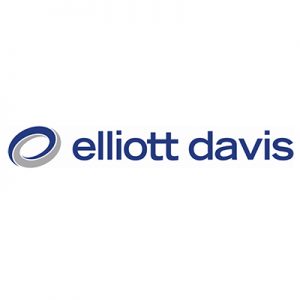Fair lending has been a focus of regulators for several years. Consequences of non-compliance can be devastating to a bank, as formal regulatory action can often bring significant fines, penalties, attract negative attention and potentially stall mergers and acquisitions. As the world around us continues to change, institutions that commit to performing data-driven fair lending reviews can expect to receive dividends from their efforts for years to come.
Historically, fair lending reviews have primarily focused on ensuring borrowers received equitable treatment, regardless of gender, race and ethnicity. Procedures usually consist of policy reviews, an analysis of approval/denial rates by protected class and a comparative file review. While these procedures make for a strong foundation, institutions should assess whether they address all inherent risks based on their operational structure and product offerings. To ensure your review program is up to par, institutions should first consider conducting a fair lending risk assessment to accurately understand and prioritize risks. Because fair lending risk exists at every stage of the lending process, institutions should evaluate risk for all lending stages and all loan types. Institutions should also consider each of the following:
- Loan Segments: are all segments and their unique risks being reviewed?
- Basis of Discrimination: are all bases — beyond the big 3 (gender, race, ethnicity) — being reviewed?
- Tailored Approach: is our review targeting our institution’s specific risk areas?
Loan Segments
Many institutions have traditionally focused their efforts on HMDA (Home Mortgage Disclosure Act) reportable loans. The HMDA data set is a great starting point as it includes all applications, physical addresses and vital demographic information. Unfortunately, on average, these loans typically represent only a portion of an institution’s loan portfolio, leaving most loans untested. Recently, regulatory focus has increased around this issue, with institutions receiving comments related to their monitoring of non-real estate, indirect and purchased loan segments.
Generally, to ensure no systemic fair lending issues lurk in an institution’s blind spot, all segments should be evaluated. Reviewing non-HMDA segments can be a challenge as most institutions do not collect demographic information on their applicants. However, by using publicly available data sets, institutions can synthesize much of the demographic information necessary to perform an adequate analysis.
The Social Security Administration publishes all baby names occurring more than five times annually.1 The list includes the name given, the gender, and the number of times it was registered. Applying this data, a “most likely gender” field can be synthesized, giving an institution the ability to review and analyze these segments for inconsistent lending practices based on gender, just as they would for HMDA reportable loans. Similarly, through their website, the United States Census Bureau (USCB) publishes a listing of all surnames occurring more than 100 times.2 Each name listed includes a total count and the percentage breakdown of how frequently the name was associated with each of the ethnicities captured in the UCSB’s canvassing process. Institutions can use this information to synthesize a “most likely ethnicity” field to evaluate these segments based on ethnicity. While this approach is less accurate than collecting data from the borrowers directly, it provides institutions with an opportunity to assess these often-neglected segments.
Basis of Discrimination
As noted, fair lending reviews have historically centered around three main classifications of borrowers: gender, race and ethnicity. However, there are many more bases to consider when performing a review based on applicable regulations. Traditionally, financial institutions have focused on preventing discrimination based on race. However, most cases often relate to facts other than race. Such findings included marital status, familial status and age discrimination, indicating that the traditional focus of reviews may no longer be sufficient.
Examiners have identified trends where married borrowers are often granted preferential treatment during approval and underwriting. Namely, when a single borrower with a co-signer applies for a loan, many institutions use the primary borrower’s credit score regardless of whether it is higher or lower than the
co-borrower’s score. Contrarily, married couples who apply (as borrower and co-borrower) often benefit by having the highest credit score selected. In this scenario, where both sets of borrowers apply as primary and co-borrower, the only differentiating factor is their marital status. Therefore, inconsistent treatment of the two groups is clear discrimination based on marital status.
Fair lending guidance states that a creditor cannot consider an applicant’s age when making a credit decision except that they are of age to enter a legally binding contract. Specifically, borrowers who are 62 years of age or older must be treated equally to those borrowers under 62. Automatic loan approval is one area where age discrimination has been identified, where the borrower’s age is treated as a reduction in the determination of their creditworthiness. Including age in a judgmental loan evaluation system violates guidance from both ECOA (Equal Credit Opportunity Act) and Regulation B.
Unlike the big three, marital status and age are data points primarily available across all segments of the loan portfolio. By analyzing your portfolio based on these data points, it is relatively simple to gain comfort that borrowers are not discriminating based on marital status and age.
Tailored Approach
To maximize the effectiveness of your fair lending review, it’s always best to start with an analytical approach. Doing so allows you to create a risk-based approach to identifying abnormalities that may require further investigation. When performing this analysis, think beyond approval and denial rates and consider analyzing your portfolio on other areas of borrower engagement for all bases of discrimination. Just a few examples include:
- Pricing compared to creditworthiness
- Pricing exceptions granted (frequency)
- Pricing exceptions granted (dollar impact)
- Time to close
- Loan fees
Managing risk is making sure that problems do not happen in your institution. By combining the insights gained from your data-driven approach and identifying and measuring fair lending risks associated with processes and monitoring mechanisms, your institution will be well on its way to a more robust fair lending review and the peace of mind that comes with it.
We Can Help
If you would like more information about tailoring your Fair Lending Program, please reach out to Alek Bevensee, Austin Ramsey, or a professional in our Financial Services Group practice.
1 Available through ssa.gov and data.gov
2 Available through census.gov

Alek Bevensee — alek.bevensee@elliottdavis.com
Alek is a Manager in Elliott Davis’ financial institutions group. As a thought leader on data analytics and emerging technologies, he has authored commentaries, presented at industry conferences and guest lectured college courses. His recent focuses include enhanced monitoring of loan portfolios (credit, compliance and operational risk), aiding companies with data-intensive calculations, and working with clients to quantify and remediate multimillion-dollar errors related to the administration of their employee benefit plans.

Austin Ramsey – austin.ramsey@elliottdavis.com
Austin is a Senior Manager in Elliott Davis’ financial institutions group. Austin is one of the firm’s specialists in performing regulatory lending compliance related audits and reviews, as well as Bank Secrecy Act and Anti-Money Laundering independent testing for banks. Within regulatory compliance, Austin specializes in Fair Lending, Unfair, Deceptive or Abusive Acts or Practices (UDAAP), Regulatory Compliance Management and deposit compliance. Austin’s experience enables him to evaluate controls within a process and provide practical recommendations to strengthen operating environments and mitigate potential risks. Austin also regularly presents at state banker association trainings and Elliott Davis sponsored events, in addition to providing specific lending compliance training for banks.










